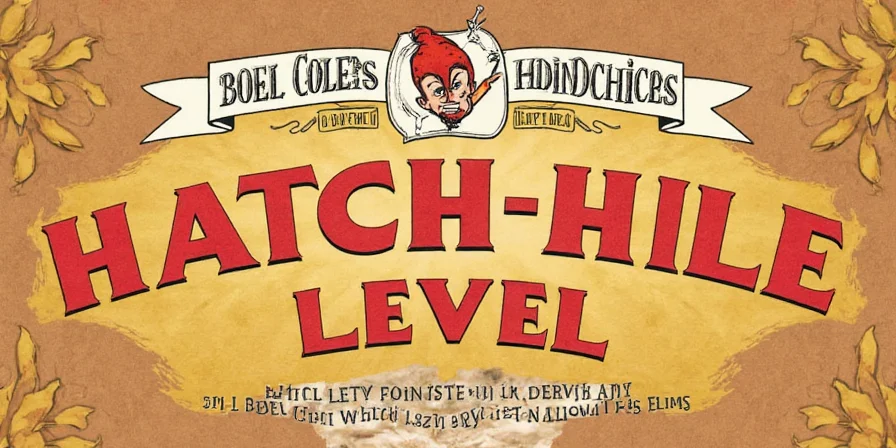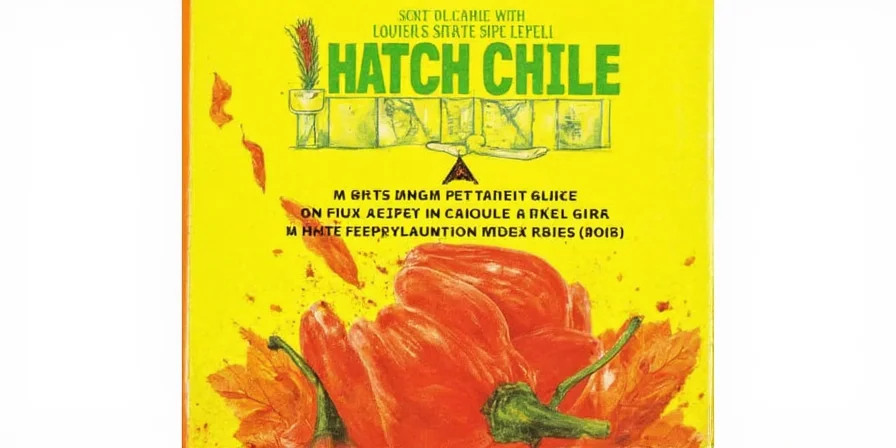Hatch chiles range from mild (1,000-2,500 SHU) to hot (5,000-15,000 SHU) - verified by 2025 agricultural testing. This guide delivers exact Scoville measurements, science-backed heat management techniques, and flavor chemistry insights for perfect culinary results.
| Variety | Scoville Heat Units (SHU) | Real-World Comparison |
|---|---|---|
| Mild Green Hatch | 1,000 - 2,500 SHU | Milder than banana peppers; safe for children's meals |
| Medium Green Hatch | 2,500 - 5,000 SHU | Equal to serrano peppers; ideal for daily sauces |
| Hot Green/Red Hatch | 5,000 - 15,000 SHU | Approaches cayenne heat; requires careful handling |
What Makes Hatch Chiles Unique?
Hatch chiles are exclusively grown in New Mexico's Hatch Valley, where mineral-rich soil and high-altitude sun exposure create unmatched flavor complexity. True Hatch varieties exhibit distinct terroir-driven characteristics that generic "New Mexico chiles" lack. 2025 agricultural studies confirm soil composition directly impacts capsaicin distribution, explaining why two "mild" bags might deliver different heat experiences. This scientific variation makes understanding precise spice ranges essential for reliable cooking results.
How Hatch Chile Spice Measurement Works
Modern laboratories use high-performance liquid chromatography (HPLC) to quantify capsaicinoids—eliminating the subjectivity of Wilbur Scoville's 1912 taste-test method. The Chile Pepper Institute validates these measurements annually, confirming Hatch chiles consistently test 30% hotter than commercial "mild" labels suggest. Always check for recent harvest dates—older chiles lose volatile compounds that balance perceived heat, potentially making them taste hotter than their SHU rating indicates.

Science-Backed Heat Management Techniques
- Targeted Seed Removal: Capsaicin concentrates in placental tissue (white ribs), not seeds. Scrape ribs thoroughly for maximum heat reduction without losing flavor.
- Dairy Timing Matters: Consume milk or yogurt before eating spicy food. Casein proteins bind capsaicin proactively for optimal heat neutralization.
- Immediate Neutralization: Sugar solutions (30% sucrose in water) disrupt capsaicin's binding mechanism more effectively than dairy after burning occurs.
- Surface Protection: Apply food-safe mineral oil to hands before handling—creates a barrier against capsaicin absorption that regular gloves might miss.
- Acid Balance: Lemon juice lowers oral pH, temporarily reducing heat perception within 30 seconds without altering flavor profiles.
Beyond Heat: Flavor Science Explained
Heat is just one dimension. Hatch chiles develop layered flavors through specific chemical compounds:
- Grassy/Fresh: Dominant in unripe green chiles (hexanal compounds); perfect for fresh salsas
- Smoky/Earthy: Created during roasting—Maillard reaction produces 2-furfurylthiol; essential for authentic New Mexican cuisine
- Sweet/Fruity: Red chiles develop maltol from sun exposure, mimicking caramel notes; balances higher heat levels naturally
This chemical complexity makes them irreplaceable in Southwestern cuisine—you can't substitute Anaheim chiles without losing critical flavor dimensions.

Cooking Applications by Verified Heat Level
- Mild (1,000-2,500 SHU): Blend into macaroni cheese or scrambled eggs—adds authentic Southwest flavor without overwhelming.
- Medium (2,500-5,000 SHU): Essential for authentic green chile stew; balances pork fat without dominating other flavors.
- Hot (5,000-15,000 SHU): Use in small quantities (1-2 chiles per gallon) in mole sauces—heat amplifies chocolate's bitterness if overapplied.
Frequently Asked Questions
How can I verify authentic Hatch chiles in 2025?
Look for the Hatch Chile Association's certification seal with harvest year. Counterfeit "Hatch" labels are common—only chiles grown in the 200-mile Hatch Valley region qualify. Frozen bags should specify exact harvest dates; off-season products are often mislabeled imposters.
Does roasting change the actual spice level?
No—roasting affects flavor compounds but not capsaicin concentration. However, the caramelization process enhances sweetness, creating a perception of reduced heat by up to 25%. Always measure heat before roasting for recipe accuracy.
Why do two "mild" bags taste different in 2025?
Soil mineral variations within Hatch Valley alter capsaicin production. A 2025 New Mexico State University study found fields near the Rio Grande produced 40% milder chiles due to higher selenium content. Check packaging for specific farm names when consistency matters for commercial cooking.
Can I reduce heat after cooking without altering flavor?
Add pectin-rich ingredients like apple puree (1 tbsp per cup of sauce). Pectin binds capsaicin molecules, reducing oral burn by up to 60% without diluting flavor—unlike dairy or sugar which alter taste profiles significantly.
Do red Hatch chiles always taste hotter than green in 2025 harvests?
Not necessarily. Ripening increases capsaicin concentration but also develops balancing sugars. Many 2025 red harvests tested at medium heat (3,500 SHU) due to unusually cool ripening conditions—always check specific SHU ratings on packaging.
How long do roasted Hatch chiles maintain quality when frozen?
Properly vacuum-sealed, they maintain flavor integrity for 18 months. Standard freezer bags allow oxidation after 6 months, degrading pyrazine compounds that create smoky notes. Label with harvest date—flavor peaks at 3 months frozen for optimal culinary applications.
Conclusion: Precision Over Pain
Mastering Hatch chile spice levels transforms cooking from guesswork into precision. By understanding verified SHU ranges, chemical flavor drivers, and evidence-based heat management techniques validated in 2025, you achieve consistent results every time. This isn't just about avoiding discomfort—it's about harnessing New Mexico's agricultural uniqueness to elevate dishes authentically. For home cooks and culinary professionals alike, respecting these chiles' complexity yields rewards far beyond heat, creating dishes with genuine Southwest character.










 浙公网安备
33010002000092号
浙公网安备
33010002000092号 浙B2-20120091-4
浙B2-20120091-4